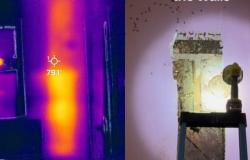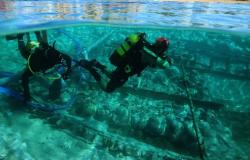Human influence on nature has created wonders and catastrophes throughout history. In certain cases, these interventions have led to irreversible consequences, transforming beautiful landscapes into apocalyptic scenarios.
One of the most notable examples is that of the Gate of Hell in Turkmenistana crater that has been burning continuously for more than fifty years due to human error.
A story of fire
(Also: The European neighborhood whose inhabitants must comply with a 32-page regulation).
(Of interest: April full pink moon: how can it be seen today in Colombia at its maximum brightness?).
This unexpected phenomenon soon attracted worldwide attention, and as time went by, the Gate of Hell became a peculiar tourist attraction. Over the years, thousands of people have visited the crater, drawn by the surreal sight of eternal flames and searing heat emanating from the depths of the earth.
A tourist destination with environmental consequences
Several explorers have attended the site to learn more about the phenomenon.
Photo:Instagram: @george_kourounis
President Berdymukhamedov, aware of the dangers and loss of valuable resources, decided in 2022 to restrict access to the site and look for ways to extinguish the fire, that has been consuming a precious natural resource without interruption.
(More: Thermonator: the flamethrower robot dog that you can buy for $37 million pesos).
Methane, a potent greenhouse gas, has been escaping into the atmosphere, exacerbating the problem of climate change and posing an imminent threat to public health and the safety of local communities. Furthermore, Turkmenistan, as a country that depends significantly on its natural resources, sees the continued leak of gas as a substantial economic loss.
No solutions in sight
The main challenge lies in the lack of understanding about the extent and mapping of the underground gas conduits that fuel the fire. This technical lack of knowledge greatly complicates any attempt at a permanent solution.
Scientific research in extreme conditions
Their mission was to collect soil samples and conduct tests to discover whether there are microorganisms capable of surviving in extreme conditions of heat and toxicity, which could have significant implications for biology and astrobiology.
Darvaza’s story not only highlights the risks of irresponsible exploitation of natural resources, but also the imperative need to develop technologies and strategies that mitigate human impact on the environment.
More news
*This information was rewritten with the assistance of artificial intelligence based on information from La Nación de Argentina (GDA) and was reviewed by a journalist and an editor.






